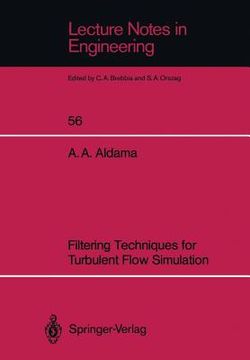Synopsis "filtering techniques for turbulent flow simulation (in English)"
1. 1 Scope of the Study The detailed and reasonably accurate computation of large scale turbulent flows has become increasingly important in geophysical and engi- neering applications in recent years. The definition of water quality management policies for reservoirs, lakes, estuaries, and coastal waters, as well as the design of cooling ponds and solar ponds, requires an ade- quate quantitative description of turbulent flows. When the diffusion of some tracer (be it active, such as temperature or salinity, or passive, such as dissolved oxygen) is of relevance to a specific application, the proper determination of the effects of turbulent transport processes has paramount importance. Thus, for instance, the proper understanding of lake and reservoir dynamics requires, as a first step, the ability to simulate turbulent flows. Applications in other areas of geophysical research, such as meteorology and oceanography are easily identified and large in number. It should be stressed that, in this context, the analyst seeks predictive ability to a certain extent. Accordingly, the need for simulation models that closely resemble the natural processes to be repre- sented has recently become more evident. Since the late 1960s considerable effort has been devoted to the development of models for the simulation of complex turbulent flows. This has resulted in the establishment of two approaches which have been, or 2 have the potential for being, applied to problems of engineering and geophysical interest.

